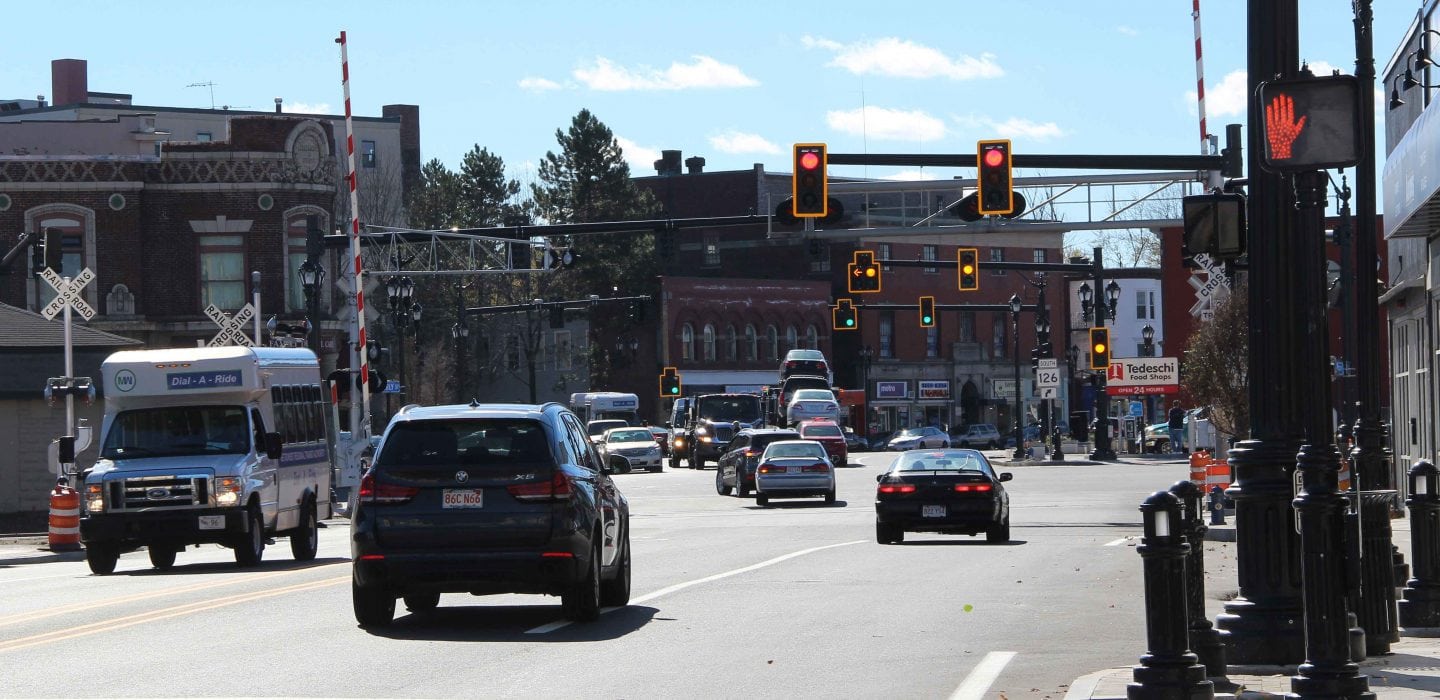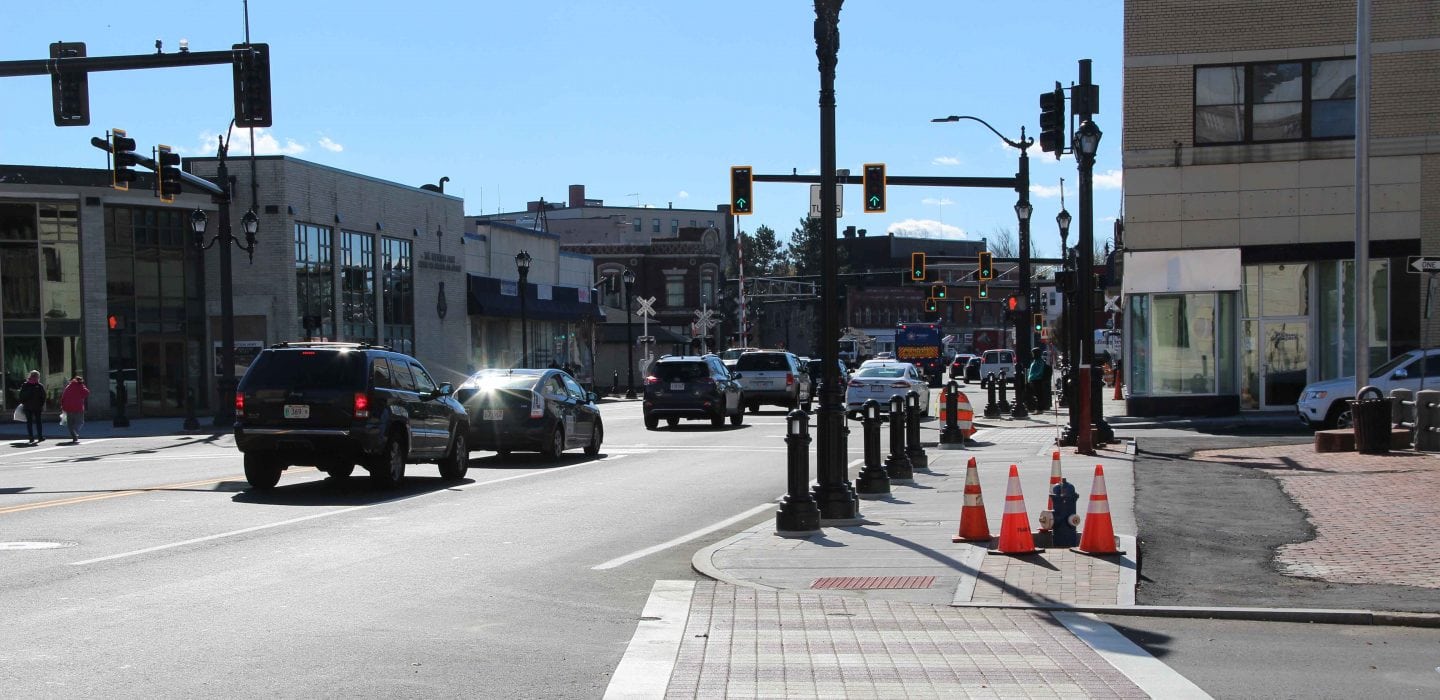Adaptive Traffic Signal Response System
Framingham, Massachusetts
This project includes significant traffic, roadway and streetscape improvements within the Framingham Downtown area and along the Concord Street (Route 126) corridor. Downtown Framingham is a hub of multi-modal transportation, involving local and regional vehicle traffic, trucking, Massachusetts Bay Transportation Authority (MBTA) commuter rail/ commuter rail station, Amtrak passenger rail, MetroWest Regional Transit Authority (MWRTA) transit buses, pedestrians and bicycles, and CSX freight operations. The project includes the installation of all new signal equipment at six signalized intersections.
An adaptive signal system was designed and implemented to manage traffic along this signalized corridor and to improve overall vehicle safety/progression, emergency vehicle pre-emption, railroad crossing pre-emption, and bicycle and pedestrian safety. Because of the close proximity of the intersections and the railroad track, the adaptive signal system is operated with four Advanced Transportation Controllers (ATC). The adaptive signal system operates with hybrid adaptive features that allow the signal splits and intersection offsets to operate dynamically but the system cycle length is selected in response to overall traffic volume within the system. The system is also designed with fail-safe features, so in the event of a communication, adaptive processor, or detector failures, the system will issue alarms to user specified recipients and automatically revert to time-of-day traffic plans stored on each of the local controllers, in real time, without operator intervention and without causing disruption to traffic flow.
The adaptive system operations accommodate exclusive pedestrian signal phasing, emergency vehicle pre-exemption, and railroad pre-emption. For communication, the adaptive system utilizes a new fiber optic cable network that is connected to the City’s remote traffic control server located in the City’s IT computer server facility. The Adaptive Control System was designed using the requirements and approach established in the FHWA’s Model System Engineering Document for Adaptive Signal Control Technology (ASCT).



